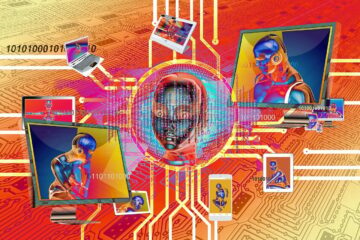Muslims are amongst the fastest growing populations in the world. It is estimated that there will be 2.2 billion Muslims by 2030. This is a huge potential market, and a consumer category which will need increasing focus from brands of all types.
At present, although we have seen a considerable expansion in Shariah-compliant products, this segment of the financial sector has progressed relatively slowly. The penetration of these products, especially on financial technology platforms, remains fairly low.
The world’s population is expected to increase fastest in places such as Asia and Africa. However, these are regions where establishing traditional banking infrastructure is difficult. Travel can be difficult, and the scattered nature of the population makes physical bank branches less effective as a means of reaching the customer.
DVC Consultants is a leader in transformative consulting. We create and consult to disruptor, disrupted and challenger brands. We are constantly assessing disruptive technologies and how they effect existing business models.
Through our work for GCC based Islamic banks, we have looked at the main issues concerning the different regulations and geographical borders effecting the global expansion of shariah compliant products. Whilst the issues are manifold, and often complex, the establishment of identity to ease the concerns regarding KYC , AML and onboarding are often the most pressing. We think the answer to this is provided by FinTech and the use of biometric identification.
Biometrics as a means of authentication provides a robust layer of security as it’s based on a unique identity in users’ physiology and behaviour – for example, fingerprints, iris scans, or facial recognition – something inherent to them, instead of something they know or own such as a password or a hardware token. This would ensure that users don’t depend on memorising passwords or carrying hardware tokens, the usage of which may be regulated differently across geographical borders.
Biometric technologies in banking are still rapidly growing. And the trend is sure to continue. It’s not surprising, considering just how many benefits it provides for financial institutions.
Aside from minimizing various security risks (both internal and external frauds) and improving customer user experience, it can also greatly help in cost optimization. By introducing biometrics into its banking processes, it’s possible to eliminate the bulk of paper documents and cards and reduce time dedicated to customer service and call centre operations.
Furthermore, industry decision makers greatly appreciate the marketing benefits of introducing biometric technologies, as it makes it easier for them to position their organizations as forward thinking and security-oriented – traits appreciated by both individual and corporate clients.
However, finding a biometric identifier is merely the first step to making it a feasible technology for the banking industry. That’s because each method worth consideration must:
be highly secure,
provide protection from piracy,
be socially acceptable,
be practical and simple to use,
be universal.
As a result, only some biometric technologies have already made their way into banking mainstream. In particular, it’s finger vein, fingerprint, face, voice and handwritten signature. However, some of the examples mentioned above show that a lot of financial institutions are ready to test even some of the more controversial technologies if they believe they can provide security and user experience benefits.
There are a lot of biometric identifiers:
Finger/palm vein – using unique vein patterns present beneath the skin’s surface in a finger or palm.
Fingerprint recognition – confirming identity based on the comparison of two fingerprints. This method is especially popular with mobile devices.
Voice/speaker recognition – refers to recognizing an individual by the characteristics of their voice (as opposed to speech recognition, which recognizes what is being said).
Face recognition – using various technologies such as computer algorithms or 3D sensors to recognize a face using measures such as relative position, shape or size of eyes, nose, jaws and more.
Iris recognition – leverages the complex patterns of the irises in the eye of each individual.
Retinal scanning – often confused with iris recognition, refers to the identification of blood vessels in the human retina.
Handwritten signature – using handwritten signature patterns to identify an individual.
In conjunction with our partners in Islamic Finance in the Gulf ,DVC has established a vehicle, Banktotal, to expand the availability of shariah compliant financial products to consumers in Africa and Asia.
Banktotal is currently working across different geographical territories and within different regulatory environments to identify the most useful biometrics identifier for their business model.
About the Author;
Quentin Anderson is Executive Chairman,
DVC Consultants and CEO and Co-Founder of BankTotal
www.dvcconsultants.com www.banktotal.org
Thought Leadership- Cogitare
Cogitare-The Latin for “To Think, ” is the collective name for DVC Consultants thoughts, insights and perspectives on a broad and eclectic number of subjects. From Brexit to Global Poverty, Islamic Banking to Subsistence Agriculture, Disruptive Technologies to The World Bank. It reflects the wide range of sectors and issues we consult on. We hope you enjoy reading them.




0 Comments